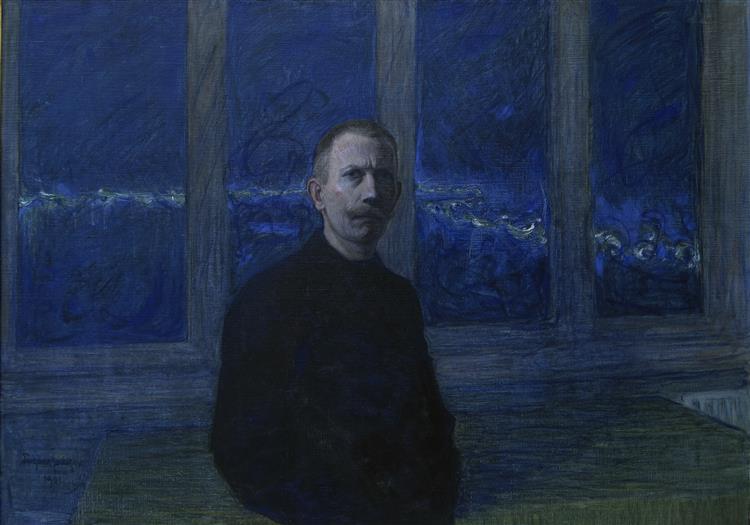Description
The work "Self -portrait - 1910" by Eugène Jansson is a magnificent example of the artist's ability to capture not only physical appearance, but also the emotional complexity of his being. Jansson, a Swedish painter born in 1862, is known for his distinctive style that intertwines modernity with symbolism dyes and a personal approach to the portrait. In this self -portrait, his interest in exploring identity is manifested through an issue that has been recurrent in art history and that Jansson addresses with special intensity.
He painting It presents the artist in the center of the composition, in a position that transmits a mixture of introspection and self -consciousness. The dark background highlights the subject, who is illuminated by a soft light that models his face and accentuates his features. This careful choice of chiaroscuro not only defines the shape of the face, but also infuses the portrait an intimate atmosphere that invites the viewer to join the contemplation of its psyche. The look of the portrayed author is penetrating, almost challenging, suggesting a direct connection with the observer, which favors a silent and deep dialogue.
The use of color is another decisive component in the work. Jansson uses a restricted but effective palette, where dark and gray -gray nuances predominate that evoke a feeling of melancholy and interior depth. This chromatic choice reinforces the introspective nature of self -portrait, while subtly suggests a more complex emotional state. The loose and almost impetuous brushstrokes that Jansson uses in the background areas contrasts with the softness of the representation of his face, which adds a layer of texture that interests the eye and causes thought about the struggle between human fragility and strength of being.
In addition, it is essential to relate this work with other artistic trends of your time. Jansson operates in a context where symbolism and modern art were in full effervescence, influenced by movements that in their time sought to free themselves from the traditional norms of the academy. This self -portrait embodies in many ways the ethos of the time, where the artist's self -perception becomes a vehicle for the exploration of existence and identity. It is plausible to connect their work with figures of modernism that also reflected on the self, such as Van Gogh or Munch, although each from their own personal visions.
Jansson's works, although they often focus on the portrait and landscape, are impregnated with an existential sense of search that throughout his career becomes increasingly palpable. His portrait technique, particularly evident in this 1910 self -portrait, tells us about his dedication to capture not only the form, but also the essence of the people around him. Painting is not merely a physical reflection of the represented subject; It is a testimony of his inner world, his emotions, and above all, of his narrative as an individual.
"Self -portrait - 1910" is therefore erected not only as a personal study by Eugène Jansson, but also as a work that invites reflection on the role of the artist as a mirror of his time, an identity experimenter and identity and An interpreter of the complexity of the human being. In summary, this piece stands out not only for its technical mastery, but also for its ability to encourage a dialogue about the nature of self -perception and art in the context of modern avant -garde.
KUADROS ©, a famous paint on your wall.
Hand-made oil painting reproductions, with the quality of professional artists and the distinctive seal of KUADROS ©.
Art reproduction service with satisfaction guarantee. If you are not completely satisfied with the replica of your painting, we refund your money 100%.

